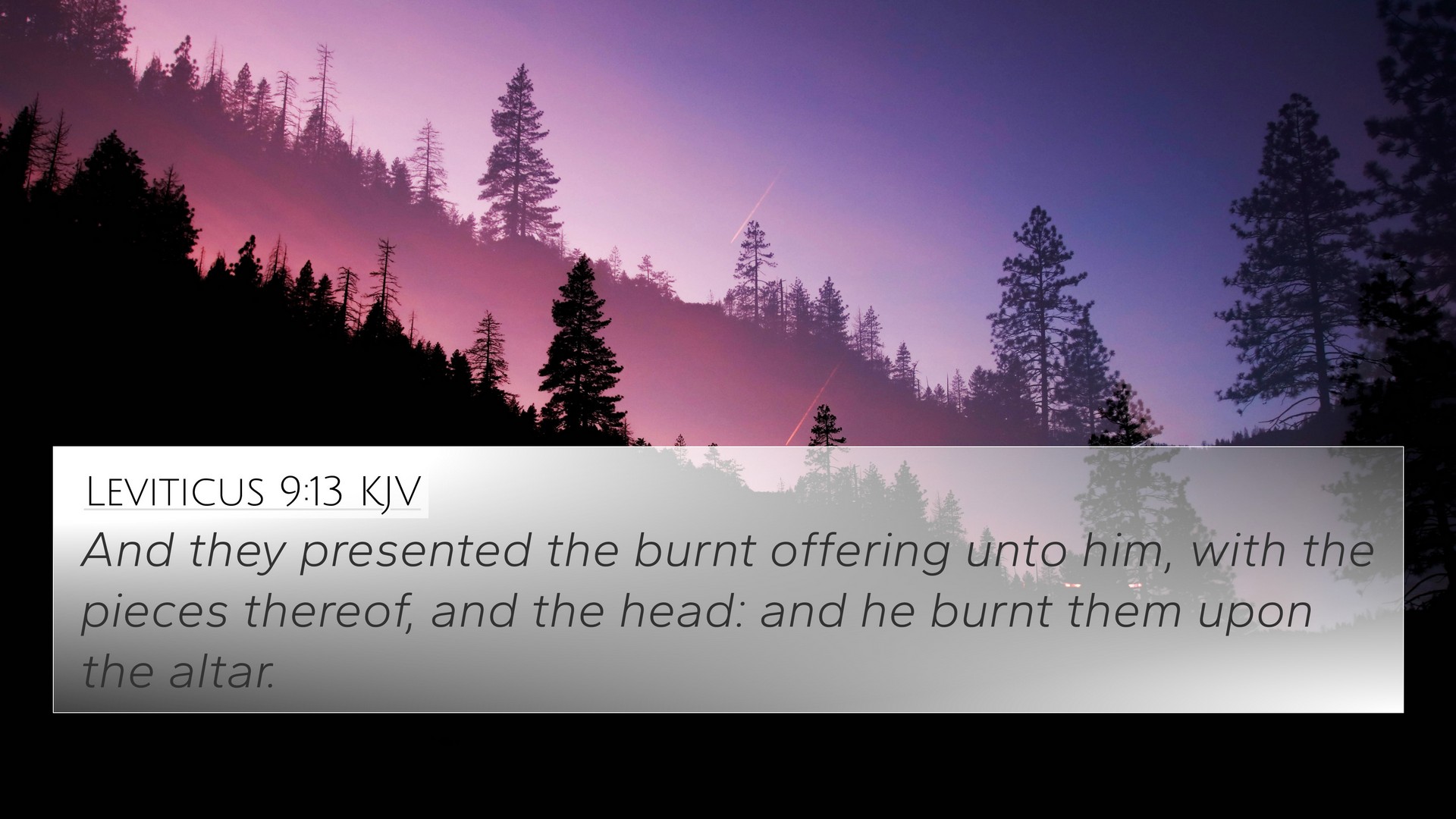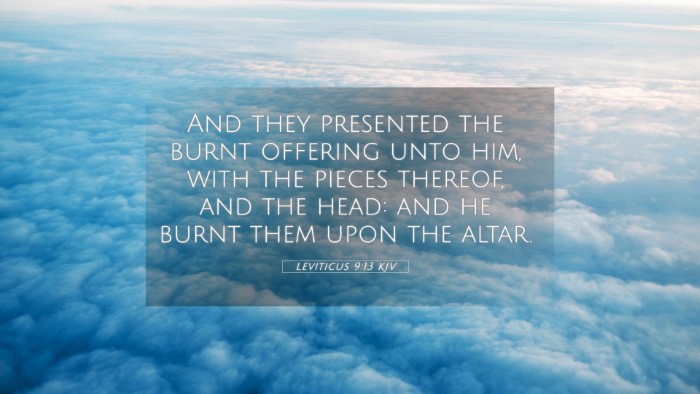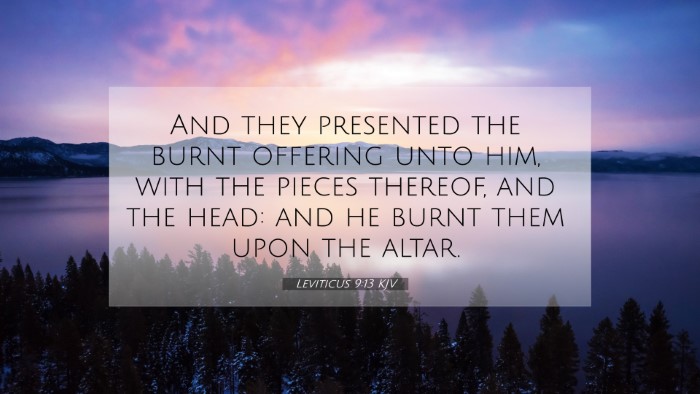Understanding Leviticus 9:13
Text of the Verse: Leviticus 9:13 states, "And they brought the burnt offering unto him, with the pieces thereof, and the head: and he burnt them upon the altar." This verse is a part of the instructions given to Aaron and his sons regarding the priestly duties in the tabernacle worship.
Summary of Insights
This verse carries significant implications regarding the sacrificial system established in Leviticus, emphasizing the importance of obedience to God’s instructions. Through the complexity of burnt offerings, it represents the complete surrender to God and the community's relationship with Him.
Commentary Insights
-
Matthew Henry:
Henry asserts that the burnt offerings symbolize the dedication of the entire being to God. The act of burning the offering on the altar signifies the acceptance of the offering by God, and it illustrates the concept of atonement and the need for purification through sacrifice.
-
Albert Barnes:
Barnes connects this verse to the broader sacrificial system, highlighting how burnt offerings were meant to please God. Each piece of the sacrifice had a different significance, reflecting aspects of worship and devotion. The act of burning on the altar signifies repaying the obligation to holiness that God demands from His people.
-
Adam Clarke:
Clarke notes the procedural aspects of offerings and the significance of each part of the animal. He emphasizes that these actions were ordained by God, and they establish a profound dialogue between the worshipper and God. The pieces represent parts of the life dedicated entirely to God.
Thematic Connections and Cross-References
Leviticus 9:13 can be connected to various themes throughout the Bible, particularly in understanding sacrificial practices and their significance in both the Old and New Testaments.
Related Bible Cross-References
- Exodus 29:18: Discusses the burnt offerings and their role in the consecration of the Priests.
- Leviticus 1:9: Explores the process of the burnt offering, aligning it with Leviticus 9:13.
- Hebrews 10:1-4: Provides insight into the ultimate fulfillment of sacrifice through Christ, illustrating the temporary nature of the Old Testament offerings.
- Romans 12:1: Paul urges believers to present their bodies as a living sacrifice, connecting to the themes presented in Leviticus 9.
- 1 Peter 2:5: Discusses offering spiritual sacrifices, akin to the physical offerings of the Old Testament.
- John 1:29: The identification of Jesus as the Lamb of God reflects the sacrificial system’s culmination.
- Isaiah 53:7: Contains prophetic insights into the ultimate sacrifice of Christ, drawing parallels with the sacrificial lambs.
Inter-Biblical Dialogue
The significance of burnt offerings in Leviticus not only illustrates the necessity of sacrifice in seeking God’s favor but also creates a dialogue that transitions into the New Testament's sacrificial system, culminating in the perfect atonement by Christ. This verse serves as a bridge, highlighting God's desire for a relationship with His people grounded in obedience and sacrifice.
Comparative Analysis
A careful comparative analysis of Leviticus 9:13 with other scriptural references reveals a continuous theme of sacrifice culminating in Christ's offering. Understanding these connections between biblical texts can enhance the believer's comprehension of God's redemptive plan throughout Scripture.
Tools for Bible Cross-Referencing
To explore the connections between these verses and others, one can use various tools such as a Bible concordance or a Bible cross-reference guide. These resources provide structure for a deeper study, helping readers identify relationships and thematic links across Scripture.
Effective Cross-Referencing Methods
Using cross-reference systems effectively can enrich one’s personal study of the Bible. Techniques such as thematic study can reveal how different verses, like Leviticus 9:13, interconnect with the overarching story of redemption.
Conclusion
In conclusion, Leviticus 9:13 serves as a vital text within the sacrificial system established in the Old Testament, offering insights into God’s expectations and desires for His people. By examining the verse in the light of various commentaries and connecting it to other scriptures, we deepen our understanding of biblical themes and interrelations, ultimately painting a more comprehensive picture of God’s covenantal relationship with humanity.


